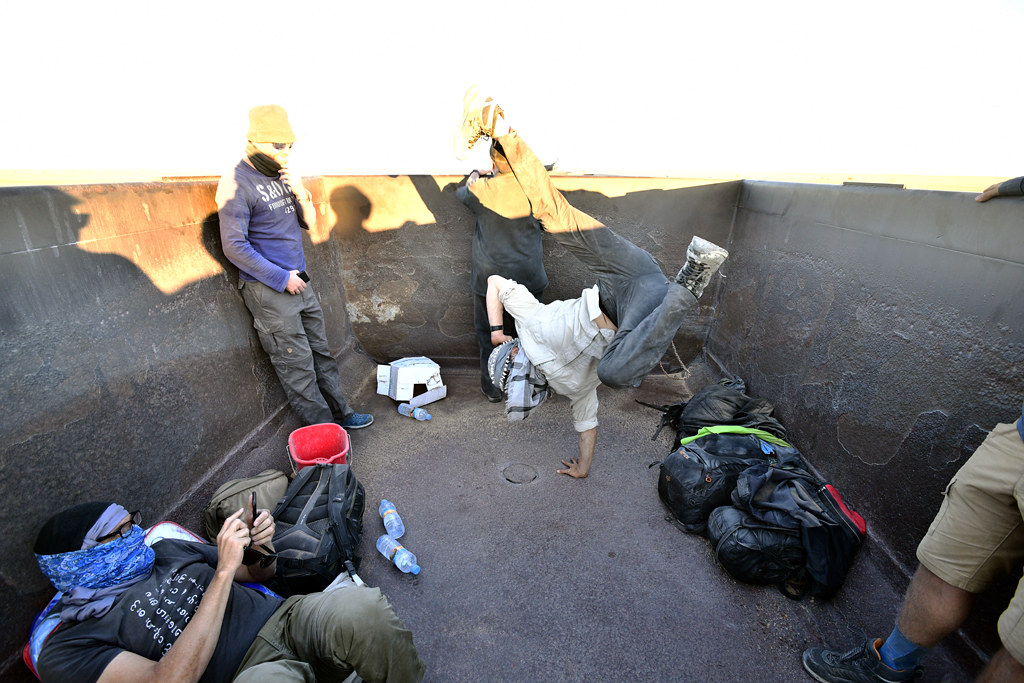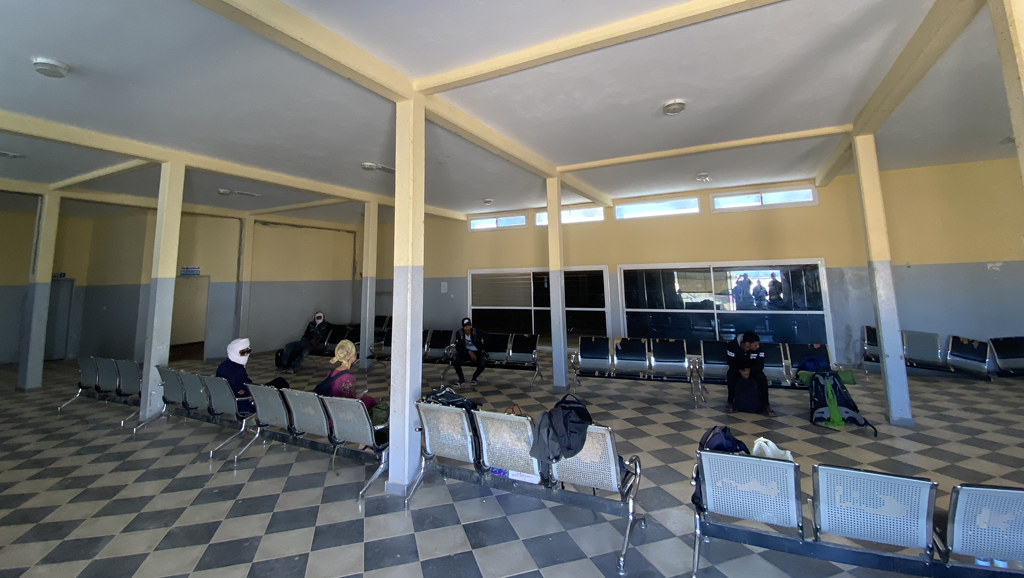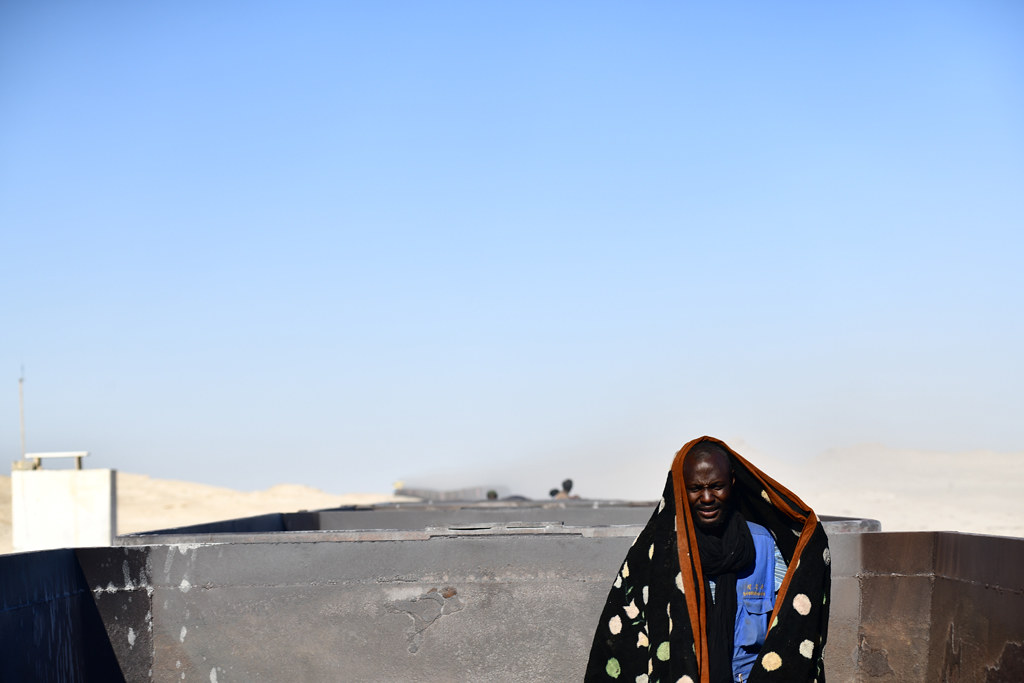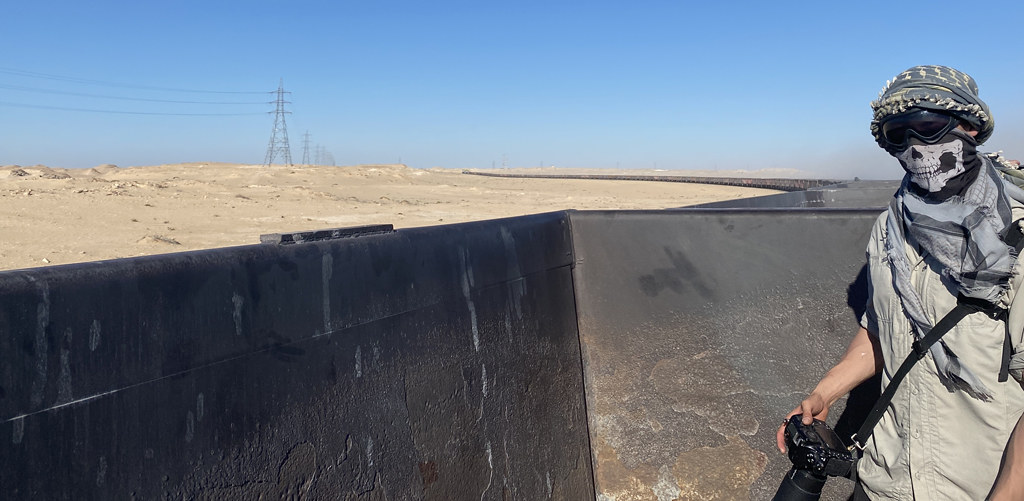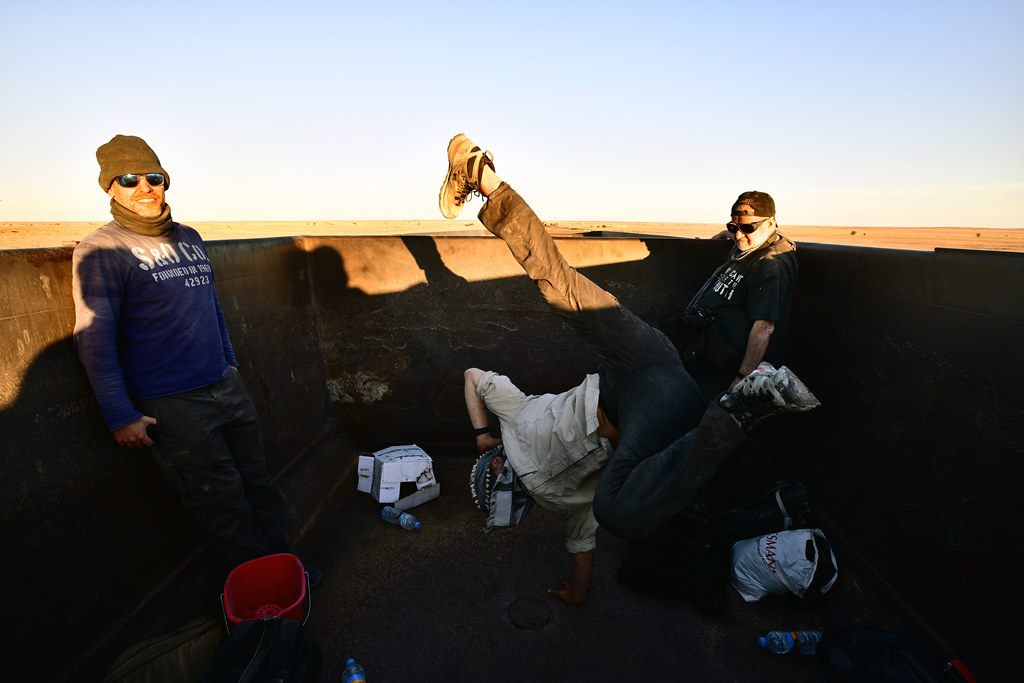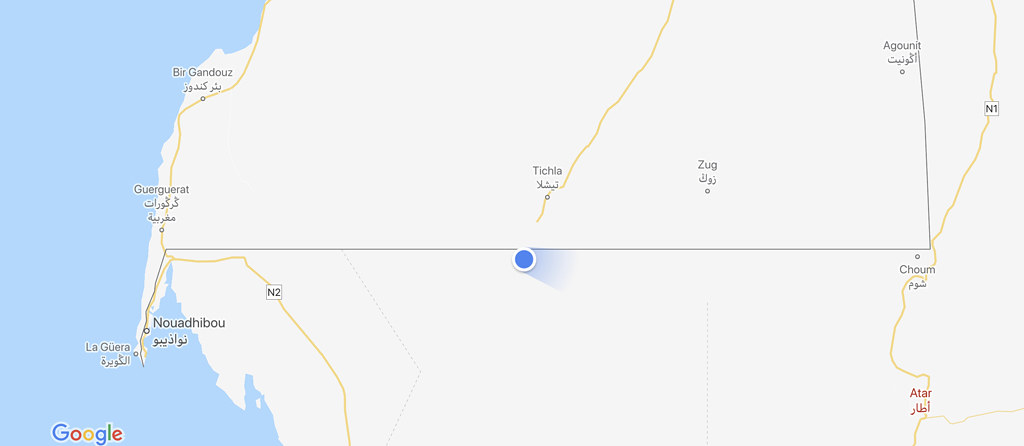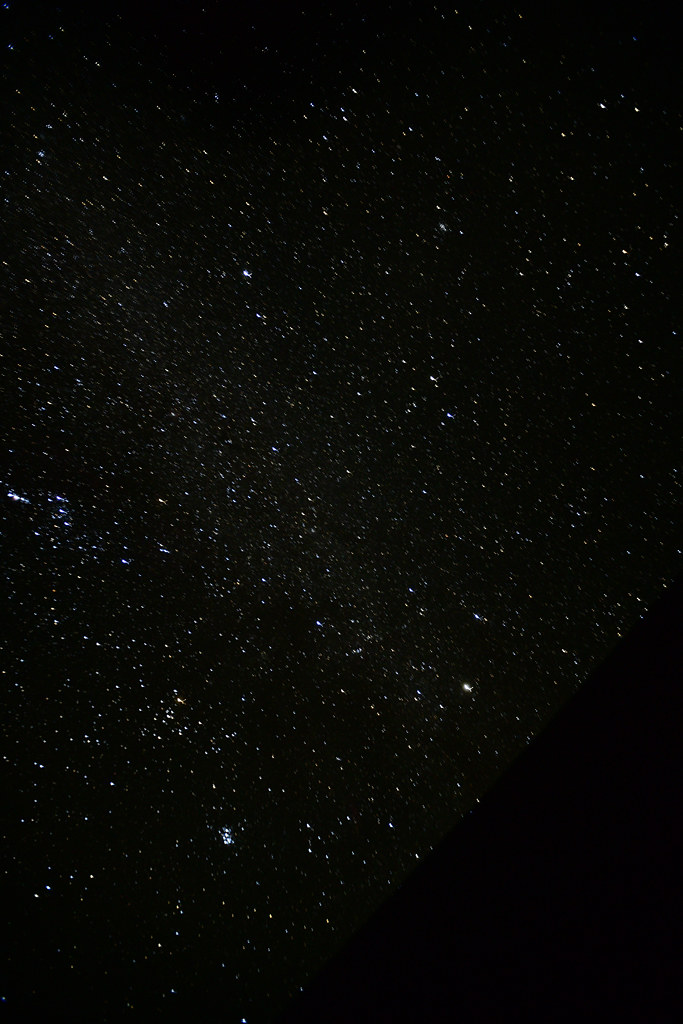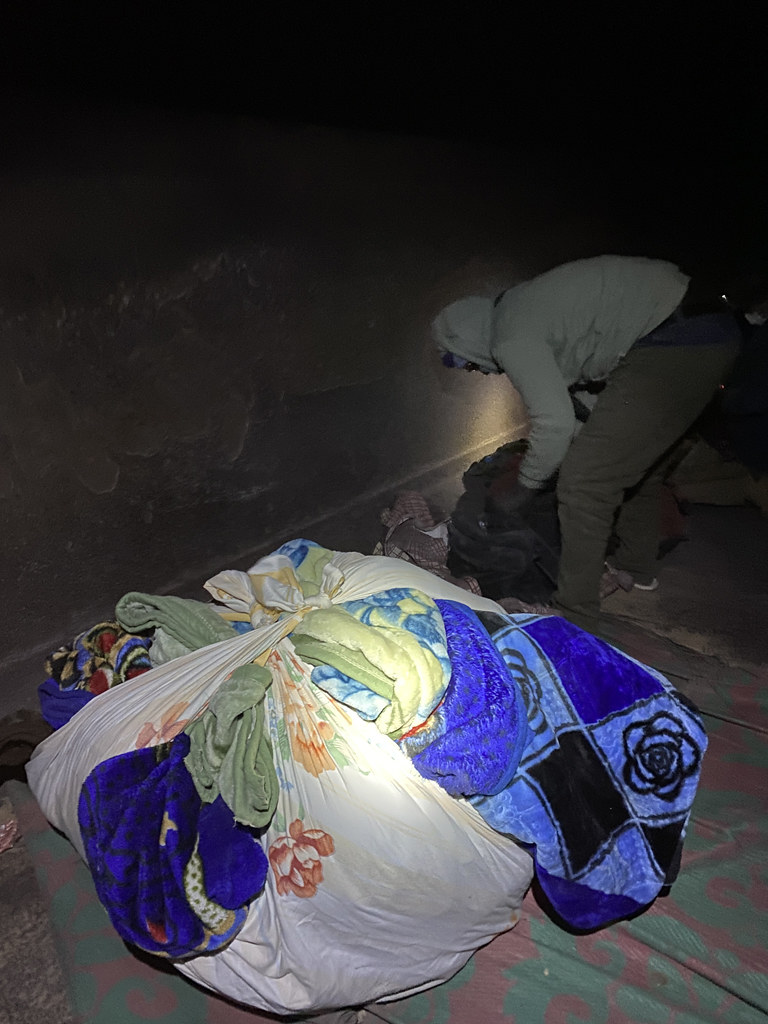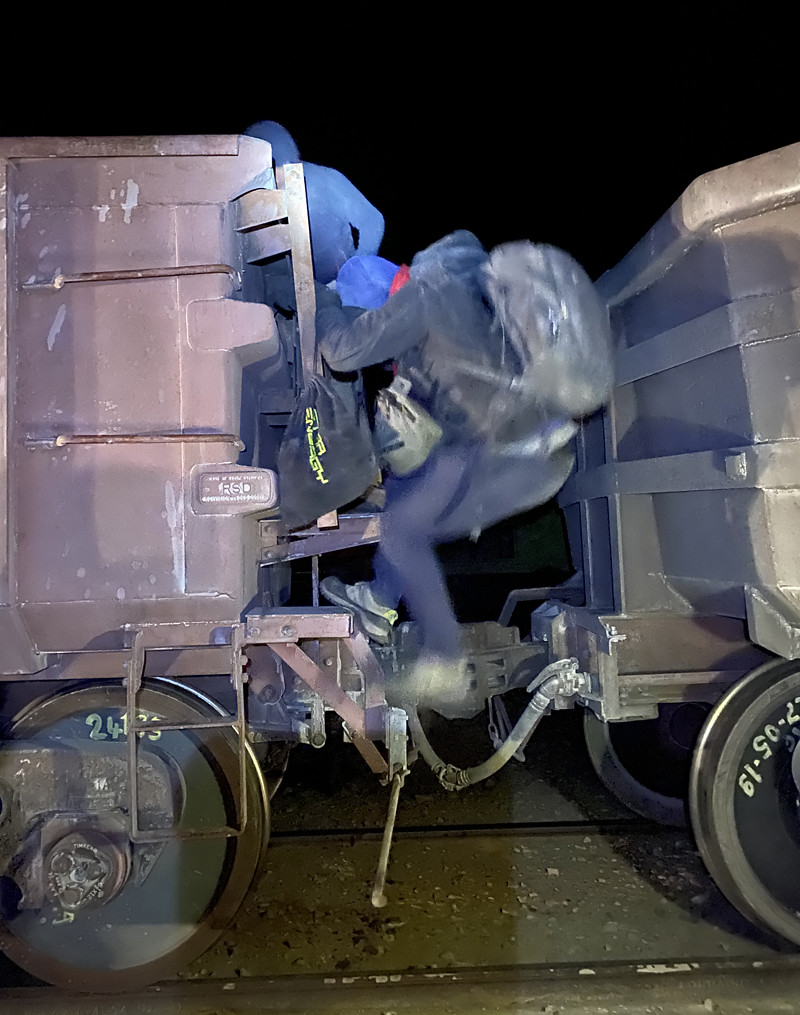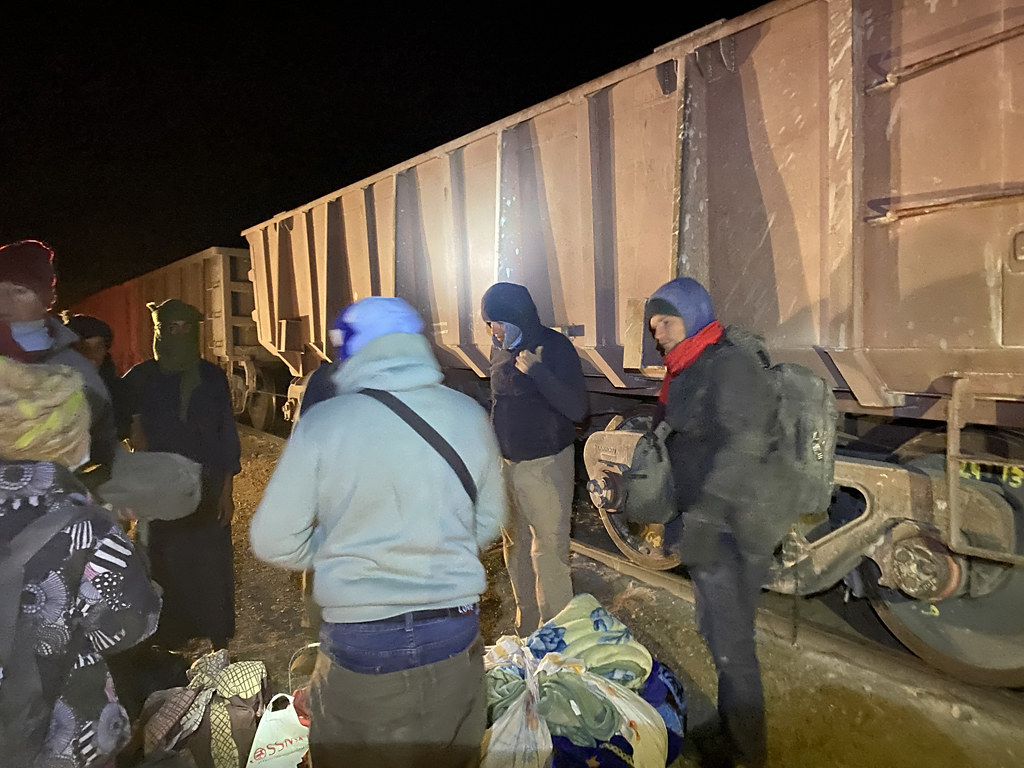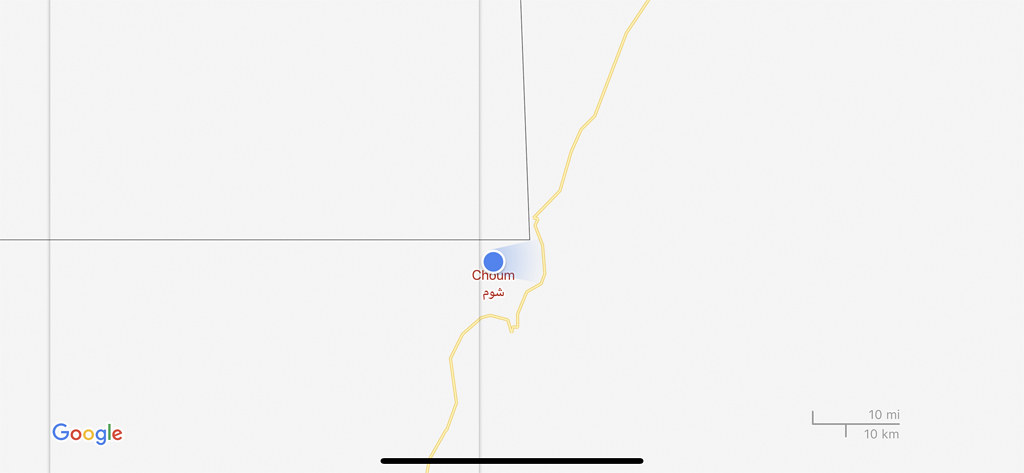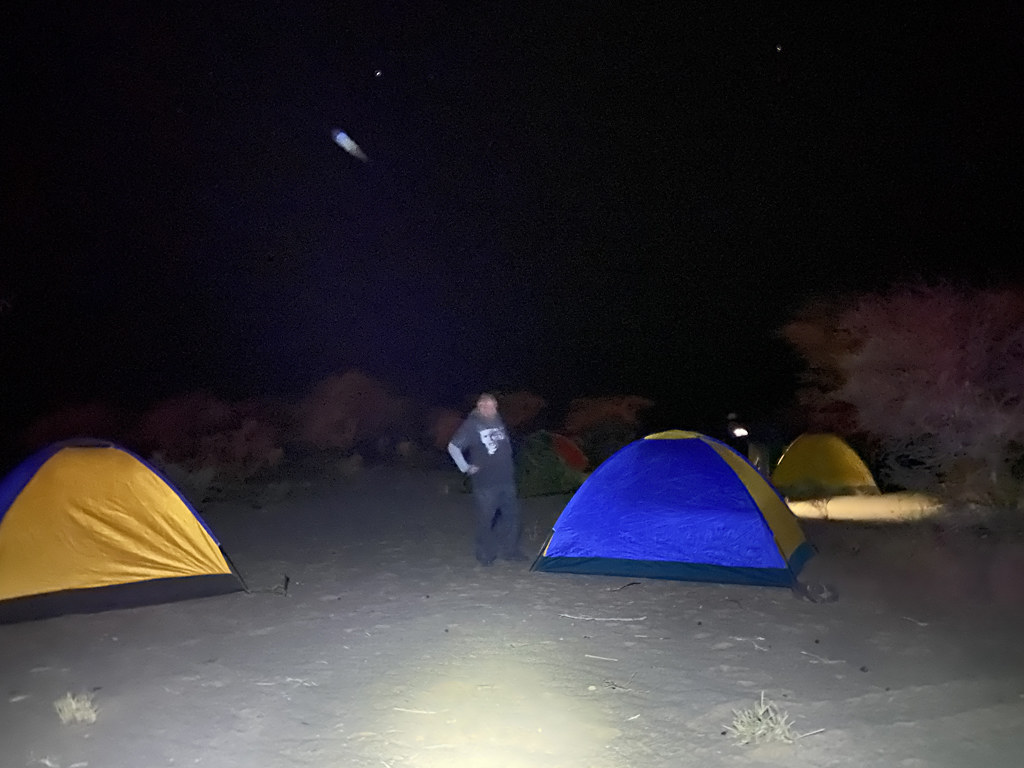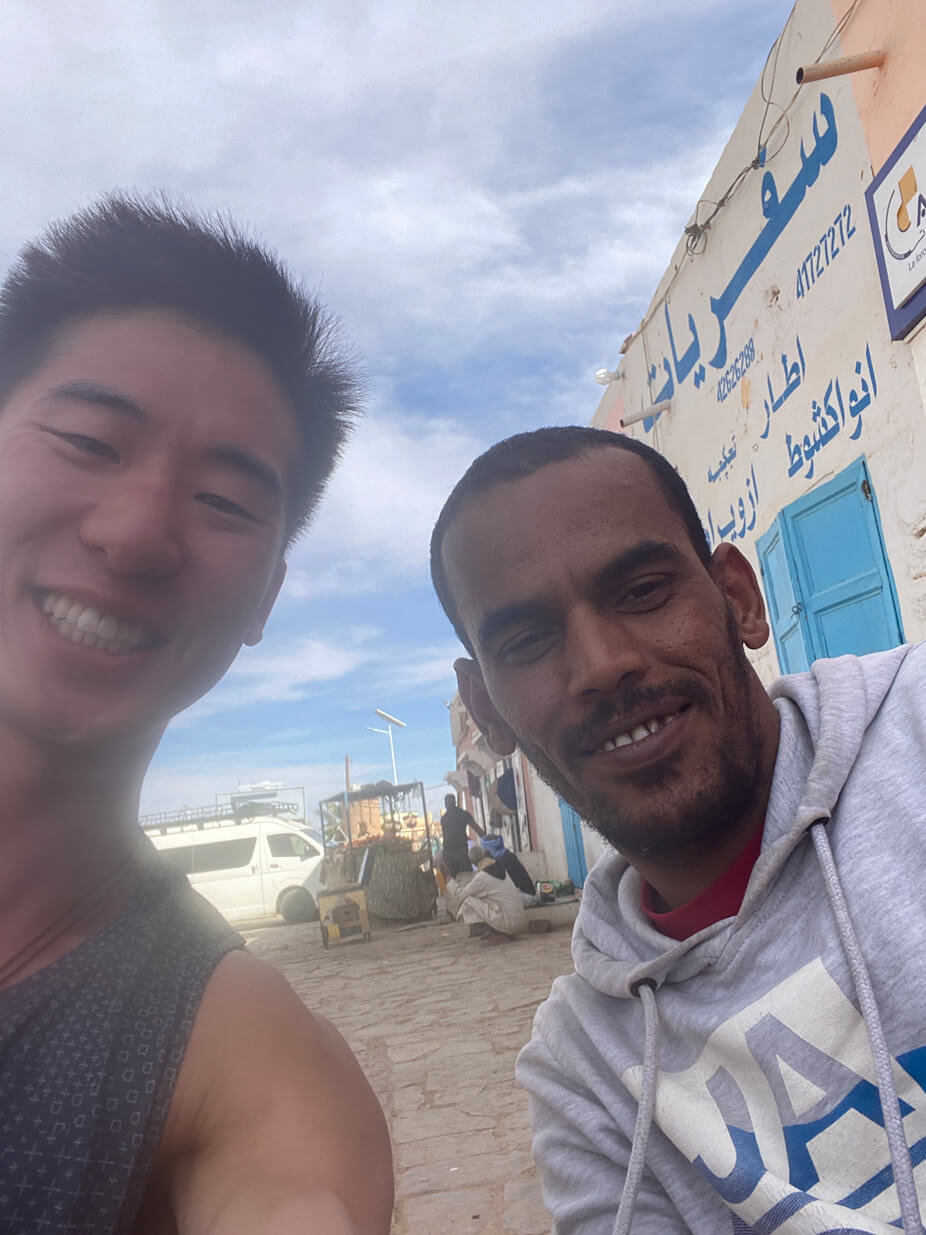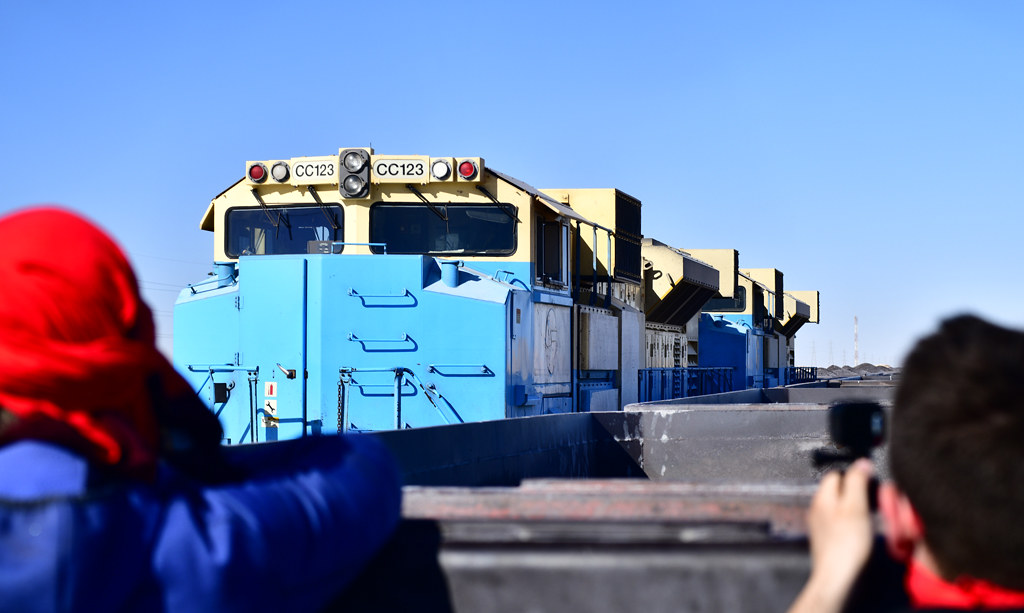Today we did a thing:
We began in Nouadhibou where we picked up some supplies for the epic train journey ahead.
If you’re serious about this experience, you should definitely pack goggles, warm blankets, scarves, some sort of breathing mask, plenty of water, food, and warm clothes (I recommend thermal undershirt and underwear, light down, windbreaker, a beanie, and a scarf) for the journey.
At 2pm we headed out to the train station outside the city limits of Nouadibou to board the famous Mauritania mineral iron ore train!
No tickets, no bookings, no cash, no reservations – you’re supposed to just hitchhike and hop on top when it arrives!
The only “thing” we had “to do” was to show our passports to the security guard at the train station as they want to make sure you’ll get off in Choum and not continue onwards into Western Sahara territory (or Morocco, depending whom you ask) without a formal exit and entry stamp.
Some statistics: The train is 3km in length (way over a mile!) with 200 carriages, 3-4 locomotives, weighing up to 84 tons, capable of carrying 17,000 tons of iron ore, and operating all 365 days of the year since 1963.
There are at least 4 of these trains running on 2 tracks covering 437 miles (704 kilometers) on its journey across the Sahara Desert from Nouadhibou, on the coast, to Zouérat, an iron mine in the center of Mauritania.
It is one of the longest and heaviest trains in the world and with its 3km length, the train took at least 10 minutes to whiz by us before stopping.
And keep in mind there is NO HORN so you have no idea when the train will immediately start again after stopping, whether it’s a minute or twenty.
So once it completely stops, GO GO GO!!!
At the moment the train was still, we quickly inspected a few wagons to make sure they had good wheels, picked one to call home, climbed its ladders, half hanging on while being passed all our bags.
And if there’s ore, you can simply chuck your bags on top before jumping on yourself.
Passenger carriages also can be attached to the train, but people are uncomfortably packed in like sardines and you’ll miss the true experience as a passenger sitting inside the wagons meant to carry the ore, or on top of the ore itself.
And while the train can carry your car as well, you have to make arrangements way ahead of time with the government for your vehicle. But once your car is on the train, you can decide to stay inside your car, sit on top of the ore, or both.
No car? No worries: let it be known that our group has proven that pitching a tent inside a wagon is totally possible and may be a great idea:
With a few minutes to spare after settling in, a huge SONIC BOOM jolted us back before the train began moving.
There was no ore in our car when we boarded, which allowed us to get the best views when climbing up the ladder while still having room to move and use the walls of the car to protect us from the wind.
The train is all yours as nobody cares that you’re here, but if you must explore, be mindful there are no barriers, brakes, or safety measures of any kind. You fall, you die, and the train keeps going.
And those of you who are lighter sleepers, good luck as carriages slam into one another constantly and unexpectedly throughout the journey in a way where we called it the “sonic boom.” (And yet through all of it I was still able to sneak in 2 hours of sleep).
A video example of the sonic boom (this was one of the lighter ones):
Hitchhiking this train will be anyone’s ride of his or her lifetime: Running through one of the harshest environments on earth from the scorching desert heat of daytime and the bitter cold at night, the train offers no shelter, no bathrooms, and no food.
So either pack ahead or buy some disposable secondhand clothing beforehand!
Since we sat in open top cars, we brought tons of blankets and were all wrapped up warm with good scarves to protect our faces from the sand and dust blowing in our direction by the train.

Sometimes the train slows down enough for some breakdancing:
Another upside? The sunset.
Even after the sun had long disappeared, the sky above us just got more purple, especially in the haze of the desert sands blowing past the train:
And while it gets really really cold here (subzero temperatures; I recommend putting on all your layers while it’s still warm around sunset), the true show comes out once it gets completely dark — if the moon isn’t full you can usually see the Milky Way stretching across the night sky.
I had a moment here. This is almost exactly what I saw (with more stars) through my naked eye whenever I looked up and took off my goggles:
While we had expected the train would make its usual delays and arrive to Choum about either 13 or 18 hours after our departure at 3:30pm from Nouadhibou, we lucked out with very efficient train conductors who got us into Choum only 9 hours later at 12:30am!
So after a 2 hour nap by midnight and 15km away from our destination, we packed up everything in our wagon and tried to leave no trace behind.
This is the time where we’d recommend that you plan out an exit strategy and order of who leaves first (using your trash bags as a booster) and who can leave last simply by using upper body strength to swing their legs over.
And by 12:35am we quickly disembarked, leaving with an experience we’ll have a hard time forgetting for the rest of our lives.
We then turned away the taxi drivers by the tracks and instead waited for our pre-arranged jeeps to take us to our campsites 5 minutes away.
And if you love stars, you’re going to love them here.
For those of you wondering “where do I sleep? how do I clean up?” Read onwards!
-Addendum: Maktoub-
Not even until 12 hours later the next day and kismet: The main group were all arranging sim cards in the town of Atar where at that very moment I debated whether to stick around, or split off from the group with the non-sim contigent and walk with them around the town for an hour. I then consciously convinced myself to go even a step further, walk off alone, and give myself some much needed me-time.
However, I got uncomfortable splitting off alone, after which I actually thought out loud to myself: “C’mon man, do what makes you uncomfortable. Good things always happen when you do. You always tell others to do the same so you might as well own up to your words and practice what you preach!” (yes I really thought this to myself as I tore myself away from the group who was walking the other direction)
As I turned around from the group and walked away I immediately saw a small café that looked inviting and where I could grab my usual afternoon espresso. And just so happened to have 2 Western-looking backpacker types and a local guide sitting in front outside. I sat down in a table across from them when the guide called out about how he liked my camera. He was a local guide — Yaya of Sidi Tours — and was leading the couple (of Rutas Salvajes) around Mauritania. It just so happens that the 3 were discussing whether to take the train, so when I mentioned that I had just gotten off the train earlier this morning and that it was one of the most life affirming experiences I ever had on my travels, that sealed the deal for them: They were going to get on the train. For once *I* was the happenstance and serendipity with impeccable timing.
Then to further add to this tale of maktoub, I mentioned how my 2 friends who had rode the train in the other direction a few weeks prior had given me advice about it and how it was meant to be that I could quickly pay it forward. Yaya asked who those friends were, and before I could answer, Yaya also mentioned that I reminded him of someone that he had met 2 weeks prior in Dakar, Senegal named David Yang.
HOLY SHIT. I KNOW THIS GUY. AND THAT IS THE FRIEND WHO GAVE ME ADVICE ABOUT IT. This same David Yang (whom I first met in the Marshall Islands last year!) also had just messaged me on Facebook yesterday morning with that last minute advice about the train!
How do I even reply to David now? A photo of me and Yaya? “Oh hey David. Thanks for the message and advice! The train worked out great. BTW Yaya says hi!”
10 minutes ago I was debating whether to go off on my own, even forcibly convincing myself to get over my fears to explore the town alone instead of stay with the group. And 10 minutes later I’m sitting with 3 strangers both finding and becoming serendipity. This is why we travel and another lesson learned that courage cannot exist without fear. So here’s to fear, and the courage that follows.
Anyways if you plan on taking the train in the other direction sitting on TOP of the iron ore . . .
. . . here is David’s formal message about his experience, written by his fellow travelers from the Facebook group Every Passport Stamp, namely Ania Budzinski of Travel Bred (who traveled with David as well as Jenna, whom I met in Iraq 2 Mays ago), of their experience heading from Choum to Nouadhibou:
MAURITANIA – JANUARY 2020 – SOMETHING TO NOTE ABOUT RIDING THE IRON ORE TRAIN
Four other EPSers and I used Hademine from Time For Mauritania (http://timeformauritania.com) for a quick 3-day tour in Mauritania, which included riding the iron ore train from Choum to Nouadhibou. Hademine was excellent—highly recommend.
Itinerary –
Day 1: Nouakchott to Terjit (approximately 5 hours) with a night in Terjit— a lovely desert oasis (much better than spending the night in Atar). [Note: There are two camps. Both basic. One is located at the oasis, and the other (Chez Jamal) is just a quick walk away.
Hademine suggested that we stay at Chez Jamal, since the tents at the oasis are situated next to the water, attracting hordes of mosquitoes.]
Day 2: Terjit to Choum with a stop in Atar (approximately 2 hours). Overnight: iron ore train (approximately 13 to 15 hours).
Day 3: Arrive in Nouadhibou.
If you leave early enough, you could technically just drive directly from Nouakchott to Choum. Easy drive. The road is paved. But, do plan to arrive in Choum early. The train does not operate on a fixed schedule. We were told that it does not usually arrive before 19:00, but that it can really come whenever. And when it does, you only have minutes to pick out a “good” wagon and hop on—we were advised to inspect the wheels and levels of iron ore. Also, we were advised to pick a wagon towards the very back of the train (to avoid having to walk 1+ km after arriving in Nouadhibou).
We arrived in Choum just before noon and spent the day hanging out by the tracks. Initially, our tour with Hademine was supposed to end there. However, he offered to join us on the journey to Nouadhibou last minute. Little did we know, this would change everything. After spending the day waiting, we were gutted when the iron ore train just passed us by and did not stop. Shortly after, we learned that no trains were expected to stop in Choum that evening. Hademine mentioned this has been happening a lot in recent weeks/months—something to keep in mind!
We were not prepared for this; we ignorantly just figured the train always stops in Choum. Nope. Apparently, if no passenger car is attached in Zouerat, the train will not stop. [Note: There is an actual train station in Choum. I suggest walking over and asking if the trains are expected to stop (just in case you need to make alternative plans). But, unless you speak French or Arabic, you will need to find someone to translate.]
With Hademine’s help, we hunted down the chief of the train station, and paid him a visit at his home. We basically begged (and incentivized) him to call the conductor of the next train (that was expected to arrive after 04:00) to have it stop—a first for him! Although he could not make any guarantees, he agreed to make some calls. Fortunately for us, he pulled through.
Boarding the train, we were hit with another curveball. The wagons were filled with water—something none of us were expecting. Per Hademine, for whatever reason, they have been adding water to the wagons in recent weeks—something else to keep in mind! Initially, we tried kicking the mounds of iron piled in the center of the wagon into the surrounding water, but quickly realized the iron was obviously not absorbing any of it (just turned to slush). We cut open three water bottles and used them to scoop out as much water as possible before we leveled off the mounds. I suggest bringing empty water bottles in case you need to do the same.
Normally, the journey from Choum to Nouadhibou is overnight (but, since we did not leave Choum until 04:45, we spent almost the entire ride under the sun). Depending on the time of year, it can get quite cold at night (today’s low was 6C or 43F, plus windchill from the moving train). Come prepared! You can buy blankets in some of the towns along the way (and in Choum for twice the price). On the way to Choum, we each bought one in Atar. There are two types of blankets for sale (they are identical from town to town)—one cheaper in quality, and the other better in quality. The blankets are relatively expensive. We shopped around, and the lowest we were able to negotiate anywhere was €30 for the “better quality” one (and €15 for the “cheaper quality”). If you are traveling with someone else, and do not mind sharing, one “better quality” blanket for two people is enough (the blankets are huge).
Make sure you have enough water and food to last you a day. Do not wait until Choum to go shopping—not much there. We bought cases of water and snacks in Nouakchott (also widely available in Atar). Other than that, bring the obvious: some type of goggles, a face mask or two, and something to cover your hair with (you can buy turbans in Atar for cheap). I also suggest bringing “contractor-type” trash bags (one for your bag(s), and one for you to fit into or sit on top of), as well as smaller bags for your phone/camera. And, have a back-up plan! I can assure you that public transportation is limited in Choum ; )
Edit here: Ania’s account of their experience all are big reasons why our group chose to go in the other direction from Nouadhibou: With no iron ore we could use the empty wagons as a cover from the sun and wind if needed, we don’t have to scoop out floods of water off the iron ore when boarding, and that the train would be guaranteed to stop for our group at the terminal station in Nouadhibou.
![]()


